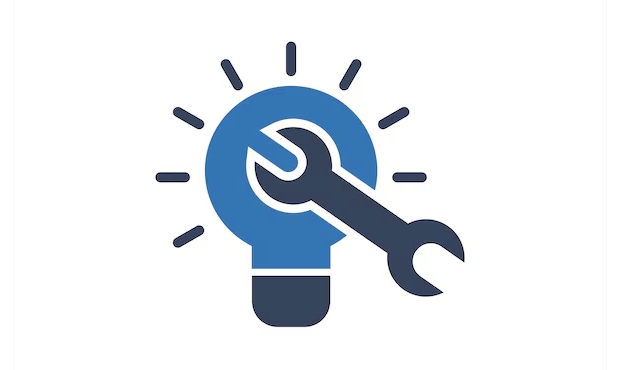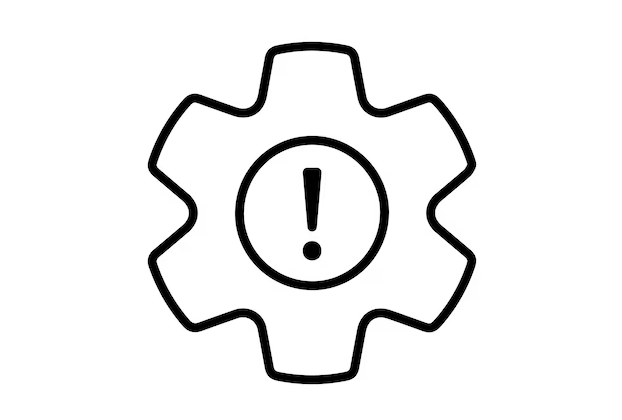在Windows中解決clock_watchdog_timeout bsod
首先檢查並關閉超頻設置,進入BIOS/UEFI禁用XMP、DOCP或AI Tweaker等選項,恢復默認設置以排除穩定性問題;2. 更新或回滾驅動程序,通過設備管理器更新處理器、芯片組和存儲控制器的驅動,若問題出現在更新後則使用驅動屬性中的“回退驅動程序”功能;3. 運行硬件診斷,使用Prime95或IntelBurnTest進行CPU壓力測試,用HWMonitor監控溫度,運行Windows內存診斷或MemTest86檢測內存,使用CrystalDiskInfo檢查磁盤健康狀態;4. 更新BIOS/UEFI和固件,從主板或設備製造商官網下載最新版本並嚴格按照說明昇級,確保電源穩定且不中斷;5. 禁用核心停靠或電源管理功能,在管理員命令提示符運行powercfg -restoredefaultschemes重置電源計劃,或在BIOS中臨時關閉C-States、CPU睡眠狀態等選項;6. 分析最小轉儲文件,使用BlueScreenView或WinDbg打開C:\Windows\Minidump\下的dump文件,查找導致超時的故障模塊,如hal.dll或clock相關驅動;7. 考慮硬件故障,嘗試最小化硬件配置,重新插拔CPU、內存和電源線,清理散熱系統,必要時更換故障CPU或主板;CLOCK_WATCHDOG_TIMEOUT通常由超頻、驅動問題或硬件不穩定引起,通過逐步排查可解決多數情況,且多數無需更換硬件即可修復。

The CLOCK_WATCHDOG_TIMEOUT Blue Screen of Death (BSOD) in Windows typically indicates that a processor core failed to respond within an expected timeframe, often due to hardware issues, driver conflicts, or system instability. While it can be alarming, this error is usually resolvable with systematic troubleshooting. Here's how to identify and fix the underlying cause.

1. Check for Overclocking and Reset to Default Settings
Overclocking—whether of the CPU, RAM, or GPU—can cause timing and stability issues that trigger the CLOCK_WATCHDOG_TIMEOUT error.
- Enter BIOS/UEFI during boot (usually by pressing F2, Del, or Esc).
- Look for options like “XMP,” “DOCP,” “Overclocking,” or “AI Tweaker.”
- Disable any overclocking settings and restore defaults (look for “Load Optimized Defaults”).
- Save and exit.
Even if you didn't manually overclock, some motherboards enable XMP profiles by default, which can push memory beyond stable limits on certain systems.

If the system becomes stable after disabling overclocking, gradually re-enable settings while stress-testing to find the stable limit.
2. Update or Roll Back Drivers
Faulty or outdated drivers—especially for CPU, chipset, or storage—can cause timing issues.

- Press Win X and select Device Manager .
- Expand categories like Processors , System devices , and Storage controllers .
- Right-click each device and choose Update driver .
- Alternatively, visit your motherboard or laptop manufacturer's website to download the latest chipset , CPU , and firmware updates.
If the issue started after a recent update:
- In Device Manager, right-click the relevant driver and select Properties .
- Go to the Driver tab and choose Roll Back Driver if available.
3. Run Hardware Diagnostics
This error often points to hardware problems. Test the following:
CPU and System Stability
- Use Prime95 or IntelBurnTest to stress-test the CPU.
- Monitor temperatures using HWMonitor or Core Temp —overheating can cause cores to hang.
RAM Issues
- Run Windows Memory Diagnostic :
- Press Win R , type
mdsched.exe, and press Enter. - Choose to restart and check for problems.
- Press Win R , type
- For a more thorough test, use MemTest86 (bootable USB) and let it run for several passes.
Storage Health
- A failing SSD or HDD can indirectly cause system hangs.
- Use CrystalDiskInfo to check drive health via SMART data.
4. Check for BIOS/UEFI and Firmware Updates
An outdated BIOS can cause poor CPU power management or scheduling issues.
- Visit your motherboard or device manufacturer's support page.
- Download the latest BIOS version.
- Follow their instructions carefully to update (usually involves placing a file on a USB drive).
⚠️ Caution : BIOS updates carry risk. Ensure stable power (don't update laptops on battery) and don't interrupt the process.
5. Disable Core Parking or Power Management Features (Advanced)
Sometimes, Windows power-saving features can cause core responsiveness issues.
- Open Command Prompt as Administrator .
- Run:
powercfg -restoredefaultschemes
This resets power plans to default.
Alternatively, in the BIOS:
- Disable C-States , CPU Sleep States , or Global C-State Control temporarily to test stability.
6. Analyze the Minidump File
Windows creates crash dumps (usually in C:\Windows\Minidump\ ) that can reveal the root cause.
- Use BlueScreenView (NirSoft) or WinDbg (from Microsoft) to open the dump file.
- Look for:
- The faulty driver or module.
- Which processor core timed out.
- Whether the issue is related to
ntoskrnl.exe, a driver, or specific hardware.
Example clue:
If the dump shows
hal.dllorclock-related modules, it reinforces a CPU or timing issue.
7. Consider Hardware Failure
If all software and firmware fixes fail:
- Test with minimal hardware: one RAM stick, integrated GPU, basic peripherals.
- Reseat CPU, RAM, and power connectors.
- On laptops: ensure cooling system is clean and thermal paste is intact.
- In rare cases, a failing CPU or motherboard may need replacement.
Resolving CLOCK_WATCHDOG_TIMEOUT often requires ruling out common causes step by step. Start with overclocking and drivers, then move to hardware testing. Most cases are fixable without replacing components—especially if caught early.
以上是在Windows中解決clock_watchdog_timeout bsod的詳細內容。更多資訊請關注PHP中文網其他相關文章!

熱AI工具

Undress AI Tool
免費脫衣圖片

Undresser.AI Undress
人工智慧驅動的應用程序,用於創建逼真的裸體照片

AI Clothes Remover
用於從照片中去除衣服的線上人工智慧工具。

Clothoff.io
AI脫衣器

Video Face Swap
使用我們完全免費的人工智慧換臉工具,輕鬆在任何影片中換臉!

熱門文章

熱工具

記事本++7.3.1
好用且免費的程式碼編輯器

SublimeText3漢化版
中文版,非常好用

禪工作室 13.0.1
強大的PHP整合開發環境

Dreamweaver CS6
視覺化網頁開發工具

SublimeText3 Mac版
神級程式碼編輯軟體(SublimeText3)
 Win11系統BSOD錯誤代碼0xc0000001怎麼辦
Jul 02, 2023 am 08:13 AM
Win11系統BSOD錯誤代碼0xc0000001怎麼辦
Jul 02, 2023 am 08:13 AM
Win11系統BSOD錯誤代碼0xc0000001怎麼辦?在我們日常電腦的使用中,難免會遇到大大小小的電腦問題,近期就有用戶遇到了BSOD錯誤代碼0xc0000001的情況,為此十分困惱,對此下面小編準備了解決方法,我們一起來看看吧。 Win11系統BSOD錯誤代碼0xc0000001解決步驟 在Recovery模式下進行啟動修復 1、首先,為Windows11建立可啟動媒體並使用該媒體啟動PC。 2、在下一個畫面上,點選修復您的電腦。 3、您現在將到達系統恢復選項畫面。 4、在選擇一
 Linux 因核心恐慌而出現藍色畫面死機
Jun 24, 2024 pm 06:47 PM
Linux 因核心恐慌而出現藍色畫面死機
Jun 24, 2024 pm 06:47 PM
去年年底,Linux 系統管理服務 systemd 255 版本被賦予了在全螢幕模式下顯示藍色畫面死機 (BSOD) 樣式錯誤訊息的能力。然而,這個解決方案不適用於核心錯誤,因此即將推出的
 如何修復Windows中的' page_fault_in_in_nonpaged_area” bsod
Jul 04, 2025 am 02:50 AM
如何修復Windows中的' page_fault_in_in_nonpaged_area” bsod
Jul 04, 2025 am 02:50 AM
遇到“PAGE_FAULT_IN_NONPAGED_AREA”藍屏錯誤時,可按照以下步驟排查:1.更新或回滾關鍵設備驅動,優先使用官方驅動;2.使用Windows內存診斷工具或MemTest86檢測內存問題;3.運行SFC、DISM和chkdsk命令修復系統文件和磁盤錯誤;4.卸載近期安裝的軟件或系統更新。多數情況下通過上述方法可解決問題,若無效則需考慮重裝系統或檢測硬件故障。
 如何修復窗戶中的藍屏死亡(BSOD)?
Jul 09, 2025 am 12:25 AM
如何修復窗戶中的藍屏死亡(BSOD)?
Jul 09, 2025 am 12:25 AM
藍屏死機(BSOD)通常由硬件、驅動或系統文件問題引起,可通過以下步驟排查修復:1.檢查最近安裝的硬件或驅動,卸載或回滾不穩定設備;2.運行sfc/scannow、DISM、chkdsk等工具掃描系統文件和磁盤錯誤;3.使用內存診斷工具測試內存故障;4.更新系統並分析藍屏日誌定位具體模塊問題。多數情況下通過逐步排查可解決。
 未分類區域Windows BSOD中的頁面故障
Jul 05, 2025 am 01:14 AM
未分類區域Windows BSOD中的頁面故障
Jul 05, 2025 am 01:14 AM
“pagefaultinnonpagedarea”藍屏錯誤常見原因及解決方法如下:1.驅動或軟件衝突,建議進入安全模式卸載近期安裝的驅動或軟件,尤其是非官方驅動;2.內存問題,使用Windows內存診斷工具或MemTest86檢測並嘗試重新插拔內存條;3.系統文件損壞,運行sfc/scannow和DISM命令修復系統文件;4.其他可能包括更新BIOS、檢查硬盤壞道、關閉超頻設置等。多數情況下通過上述步驟可定位並解決問題。
 如何修復R.E.P.O.導致藍屏死亡(BSOD)錯誤
Aug 15, 2025 am 06:47 AM
如何修復R.E.P.O.導致藍屏死亡(BSOD)錯誤
Aug 15, 2025 am 06:47 AM
ifbsodiscausedbyr.e.p.o。 ,turtheSesteps:1.uninstallr.e.p.o.software.2.disableRelelelelateDriversIndeviceManager.3.performacleanBoot.4.updateRorlollBack..5.5.runsfcanddismTimDismTimDismTormDismTorePairStystemfiles。
 我的win PC不是在BSOD之後創建崩潰轉儲文件(memore.dmp)
Aug 01, 2025 am 05:07 AM
我的win PC不是在BSOD之後創建崩潰轉儲文件(memore.dmp)
Aug 01, 2025 am 05:07 AM
First,ensurecrashdumpsettingsarecorrectlyconfiguredinSystemPropertiesbysettingthewritedebugginginformationtoSmall,Kernel,orCompleteMemoryDumpandconfirmingthepathisvalid,asincorrectsettingspreventdumpcreation.2.Next,verifythesystemdrivehassufficientfr
 在Windows中解決clock_watchdog_timeout bsod
Aug 06, 2025 am 07:47 AM
在Windows中解決clock_watchdog_timeout bsod
Aug 06, 2025 am 07:47 AM
首先檢查並關閉超頻設置,進入BIOS/UEFI禁用XMP、DOCP或AITweaker等選項,恢復默認設置以排除穩定性問題;2.更新或回滾驅動程序,通過設備管理器更新處理器、芯片組和存儲控制器的驅動,若問題出現在更新後則使用驅動屬性中的“回退驅動程序”功能;3.運行硬件診斷,使用Prime95或IntelBurnTest進行CPU壓力測試,用HWMonitor監控溫度,運行Windows內存診斷或MemTest86檢測內存,使用CrystalDiskInfo檢查磁盤健康狀態;4.更新BIOS/U







